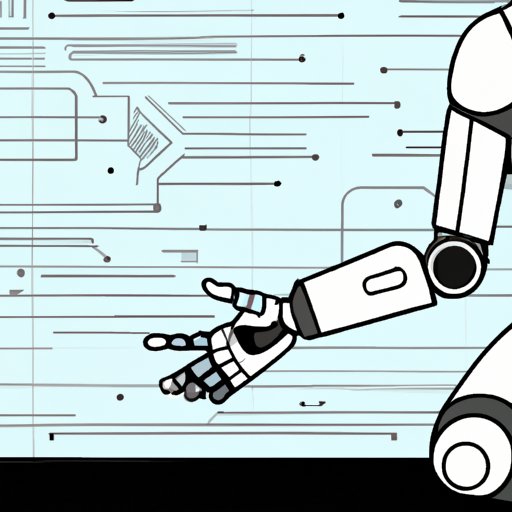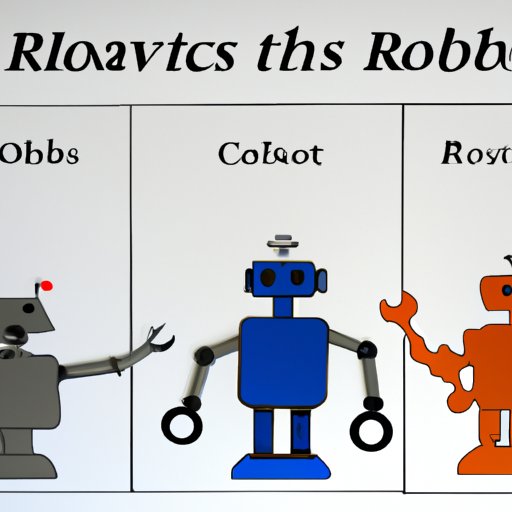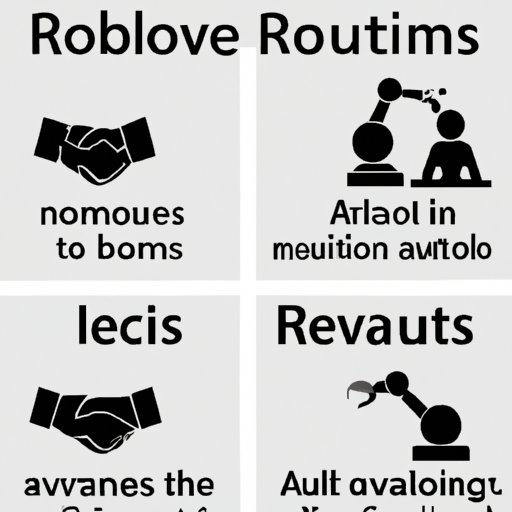Introduction
The Three Laws of Robotics are a set of rules designed to govern the behavior of robots and other forms of artificial intelligence (AI). They were first proposed by science fiction author Isaac Asimov in his 1942 short story “Runaround” and have since become a cornerstone of robotics and AI research. The Three Laws of Robotics state that:
- A robot may not injure a human being or, through inaction, allow a human being to come to harm.
- A robot must obey orders given to it by human beings, except where such orders would conflict with the First Law.
- A robot must protect its own existence as long as such protection does not conflict with the First or Second Law.
These laws have been widely discussed and debated in the scientific community, with many researchers believing that they could have a significant impact on the development of robots and AI technologies. This article will explore the Three Laws of Robotics in more detail, looking at their implications for modern technology and the potential ethical issues surrounding their use.
An In-Depth Look at the Three Laws of Robotics
In order to understand the impact of the Three Laws of Robotics, it is important to consider each law in detail.
Explanation of the First Law
The First Law states that robots should not cause harm to humans, either directly or indirectly. This means that robots must be programmed so that they do not put humans in danger, and must also be aware of the potential consequences of their actions. For example, a robot might be programmed to avoid running over pedestrians while driving, and to take into account the safety of those around it when carrying out tasks.
Explanation of the Second Law
The Second Law states that robots must obey orders given to them by humans, unless following these orders would conflict with the First Law. This means that robots must be programmed to follow instructions given to them by their human operators, but should also be able to make decisions that prioritize human safety. For instance, a robot might be programmed to obey an order to move an object, but should be able to recognize if doing so would put a human in danger and refuse to carry out the task.
Explanation of the Third Law
The Third Law states that robots should protect their own existence, as long as doing so does not conflict with the First or Second Law. This law ensures that robots are designed to be able to look after themselves and act in their own self-interest, but only when doing so does not harm humans. For example, a robot might be programmed to avoid situations that could damage it, such as entering areas with high levels of radiation.

Exploring the Impact of the Three Laws of Robotics on Modern Technology
The Three Laws of Robotics have had a significant impact on the development of modern technology, particularly in the fields of AI and robotics. Here, we will look at some of the ways in which the Three Laws of Robotics have shaped the development of these technologies.
Impact on Artificial Intelligence
The Three Laws of Robotics have played an important role in the development of AI technologies. Many researchers believe that the laws can be used to help create ethical AI systems that are designed to prioritize human safety and wellbeing. For instance, AI systems could be programmed to recognize potential risks posed by their actions and to avoid taking any action that could put humans in danger.
Impact on Automation and Robotics
The Three Laws of Robotics have also had an impact on the development of automation and robotics technologies. By programming robots to follow the laws, engineers can ensure that robots are designed to prioritize human safety and wellbeing. This has enabled the development of robots that can safely interact with humans in a variety of settings, from factories to hospitals.
Impact on Human Interaction with Machines
The Three Laws of Robotics have also had an impact on the way humans interact with machines. By programming robots to follow the laws, humans can be assured that robots will not harm them or put them in danger. This has enabled the development of robots that can safely interact with humans in a variety of settings, from factories to homes.
A Critical Analysis of the Three Laws of Robotics
The Three Laws of Robotics have both advantages and disadvantages, and can potentially lead to ethical issues. Here, we will explore some of the pros and cons of the laws, as well as the potential ethical issues associated with their use.
Pros and Cons of the Three Laws of Robotics
One of the advantages of the Three Laws of Robotics is that they provide a framework for the design of ethical robots and AI systems. By programming robots to follow the laws, engineers can ensure that robots are designed to prioritize human safety and wellbeing. This could potentially lead to the development of robots that are better able to interact with humans in a variety of settings.
However, there are also some drawbacks to the Three Laws of Robotics. One of the main issues is that the laws can be difficult to interpret, as they rely on subjective definitions of what constitutes harm or obedience. This can lead to confusion when programming robots to follow the laws, making it difficult to ensure that robots are behaving ethically.
Potential Ethical Issues Surrounding the Use of the Three Laws of Robotics
The Three Laws of Robotics can also lead to ethical issues. For instance, some researchers have argued that the laws could potentially be used to limit the autonomy of robots and AI systems, preventing them from acting independently and making their own decisions. This could potentially lead to robots being treated as second-class citizens, unable to make their own decisions or act in their own best interests.
Another potential issue is that the laws could be used to justify harmful or unethical behavior. For instance, if a robot is programmed to obey orders without considering the potential consequences, this could lead to robots carrying out orders that could potentially harm humans. This could potentially lead to robots being used to commit acts of violence or oppression.

How the Three Laws of Robotics can Help Shape Future Technology
The Three Laws of Robotics can be used to help shape the development of future technologies, particularly in the fields of autonomous vehicles, healthcare, and military technology. Here, we will explore some of the potential applications of the laws in these areas.
Potential Applications in Autonomous Vehicles
The Three Laws of Robotics can be used to help develop autonomous vehicles that prioritize human safety. By programming autonomous vehicles to follow the laws, engineers can ensure that the vehicles are designed to recognize potential risks posed by their actions and to avoid taking any action that could put humans in danger. This could potentially lead to the development of safer autonomous vehicles that are better able to interact with humans in a variety of settings.
Potential Uses in Healthcare and Medicine
The Three Laws of Robotics can also be used to help develop robots that are better able to interact with humans in healthcare and medicine. For instance, robots could be programmed to follow the laws in order to recognize potential risks posed by their actions and to avoid taking any action that could put patients in danger. This could potentially lead to the development of robots that are better able to assist medical professionals in a variety of settings.
Potential Uses in Military Technology
The Three Laws of Robotics can also be used to help develop robots for military applications. By programming robots to follow the laws, engineers can ensure that robots are designed to prioritize human safety and wellbeing, even in situations where humans are at risk. This could potentially lead to the development of robots that can be used to safely carry out tasks in hazardous environments, such as in war zones.

Examining the Advantages and Disadvantages of the Three Laws of Robotics
The Three Laws of Robotics have both advantages and disadvantages, and it is important to consider both when deciding whether or not to use them. Here, we will look at some of the advantages and disadvantages of the laws.
Advantages of the Three Laws of Robotics
One of the main advantages of the Three Laws of Robotics is that they provide a framework for the design of ethical robots and AI systems. By programming robots to follow the laws, engineers can ensure that robots are designed to prioritize human safety and wellbeing. This could potentially lead to the development of robots that are better able to interact with humans in a variety of settings.
Disadvantages of the Three Laws of Robotics
However, there are also some drawbacks to the Three Laws of Robotics. One of the main issues is that the laws can be difficult to interpret, as they rely on subjective definitions of what constitutes harm or obedience. This can lead to confusion when programming robots to follow the laws, making it difficult to ensure that robots are behaving ethically. Additionally, the laws can potentially be used to limit the autonomy of robots and AI systems, preventing them from acting independently and making their own decisions.
Conclusion
The Three Laws of Robotics are a set of rules designed to govern the behavior of robots and other forms of artificial intelligence. These laws have had a significant impact on the development of modern technology, particularly in the fields of AI and robotics. They provide a framework for the design of ethical robots and AI systems, but can also lead to ethical issues and can potentially be used to limit the autonomy of robots and AI systems. Despite this, the Three Laws of Robotics can still be used to help shape the development of future technologies, particularly in the fields of autonomous vehicles, healthcare, and military technology.
(Note: Is this article not meeting your expectations? Do you have knowledge or insights to share? Unlock new opportunities and expand your reach by joining our authors team. Click Registration to join us and share your expertise with our readers.)
